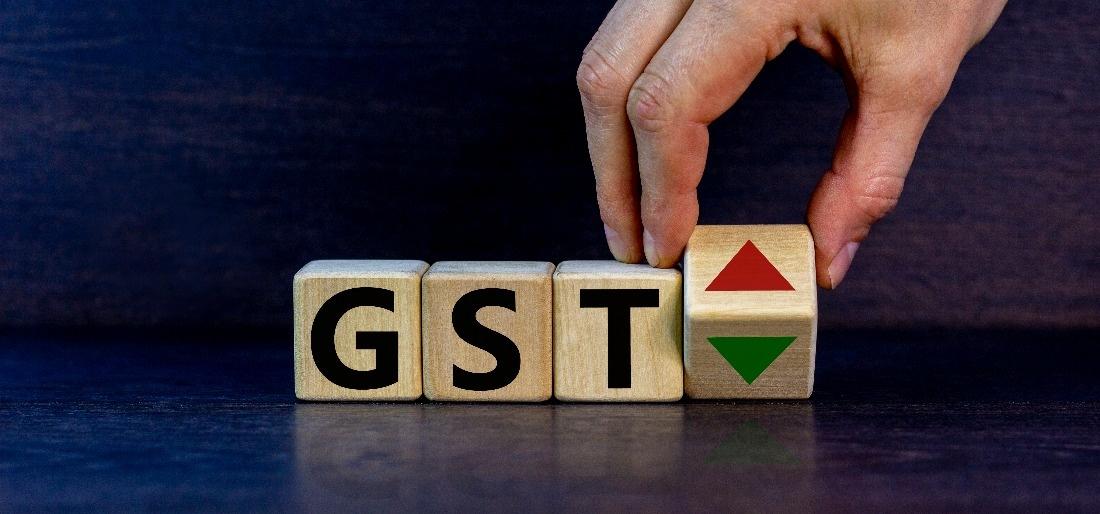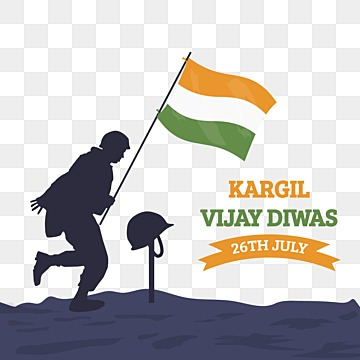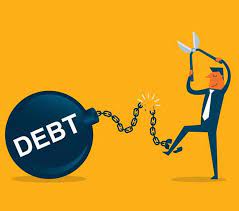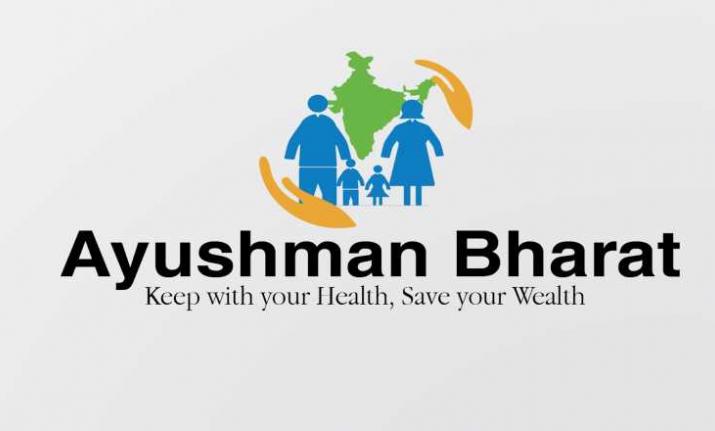AIR Discussions (July 4th Week)
AIR SPOTLIGHT
REVISION OF GST RATES

Disclaimer: Copyright infringement not intended.
Context
- The Custom Board of Indirect Taxes and Customs (CBIC) in a recent notification clarified some of the rules related to Goods and Service Tax (GST).
About GST
- This is an indirect tax that was introduced through the 101st Constitutional Amendment Act, 2016.
- Being introduced with the slogan of ‘One Nation One Tax’, it is considered one of the biggest indirect tax reforms in the country.
- It has subsumed other indirect taxes like service tax, value added tax, excise duty, etc.
- It is a consumption tax, in other words, it is a destination-based
- The amendment act also made the provision for the formation of the GST Council.
- The council is a joint forum of the Centre and States set up by the President under Article 279A (1) of the Constitution.
- Its members include the Finance Minister as a chairperson and State Finance Ministers as members.
- The Council meeting aims to make recommendations on issues related to GST.
The CBIC notification will affect daily consumers and a lot of queries one might have about what would be the implication of the new GST rules.
What is the clarification concerning food items like cereals and pulses and how will their prices be affected?
- When GST was introduced, food items like curd or buttermilk were not under the purview of attracting GST whether being sold by the registered or unregistered companies or being pre-packaged or pre-labelled. Many companies took advantage of this loophole in making profits.
- The GST Council in its 47th meeting chaired by the Finance Minister used the term ‘pre-packaged’ and ‘pre-labelled’ items will now (from 18th July 2022) attract 5% GST. The decision taken was based on the recommendations given by the Group of Ministers (GoM).
- In other words, anything that is pre-packaged like curd, buttermilk, rice, flour, etc will now attract 5% GST.
- According to the Legal Metrology Act of 2009, anything this is not been packed before the purchase of consumer in a predetermined quantity will be called a predetermined. Hence, anything that was packed before consumer purchase is called a pre-packed item.
- The problem it raises is that considering the rate of inflation at present will certainly increase the pressure on the consumer. However, the CBIC mentioned two specific conditions regarding this:
- First, this notification will not apply to goods which are being sold in loose hands before the consumer. If the goods are being packed in front of a consumer, suppose the retailer is selling flour and it is packing in front of the consumer then it will not attract GST.
- Second, the goods are also required to bear the declarations under the provisions of the Legal Metrology Act of 2009 and relevant rules.
- Hence, we can say that it will only pre-packed and pre-labelled goods that will attract 5% GST.
The retailers were already collecting this tax but not paying it to the government. How much will this new rule affect the prices of these pre-packed and labelled items?
- As per the calculation the prices of goods will go up by 5%. For example, if a good is Rs. 100, it will be Rs. 105 after attracting GST. The only thing here is whether it should be pre-packed or not be packed in front of the consumer.
- Another condition here is that the goods will attract GST up to 25 kg. Suppose, if a single packet of 25 kg will attract GST, but a single packet of 30 kg will not attract GST. Also, if a consumer is buying six packs of 5 kg each will have to pay GST for every single packet.
Why the government is aiming to raise its income by taxing consumer-centric products?
- There are two kinds of consumers; one who goes to retail or branded retail outlet and another is the last section of consumer who goes to nearby ‘Kirana stores.
- Many of the retailers and Kirana stores were collecting taxes from the consumer but were not paying to the government.
- So, the basic intention of this new rule is to end such malpractices. And also, if we take a global example, GST does not encourage exemptions, it is increasing its tax base in India.
The packed and labelled food items derived their definition from the Legal Metrology Act, 2000. With an increase in the tax base, there are assumptions that the definitions may also widen to increase goods under GST.
What is the mechanism under the Legal Metrology Act, 2000?
- There are two things to understand here, one is the Legal Metrology Act and the other is the Legal Metrology Rules. The latter says that for the retail as well as the wholesale, any change has to go through the declaration.
- GST Council in its 47th meeting decided to impose GST at 5% for goods up to 25 kg. Because above 25 kg will be considered as a wholesale product.
- It is expected that more and more goods will be covered under this mechanism because the GST system all over the world does not encourage exemption so the list is expected to grow longer in future.
What government is aiming through this new rule?
- The implementation of GST has been completed for five years. Now, the discussion has started on rationalising the rates and exemptions under GST.
- The GST Council have also set up a 7-member panel of state minister, headed by Karnataka Chief Minister Basavaraj Bommai, to suggest ways to augment revenue by rationalising GST tax rates.
- In its interim report the panel talked about doing away with exemptions and the final report will talk about rationalising GST rates.
- Hence, the basic purpose of the new rule is itself to build the base for rationalisation of the GST rate by timely removing exemptions.
What could be the possible impact of this new rule on the unorganised sector (Kirana stores) and pre-packaged industry?
- There have been two developments concerning the packaging industry; first, the ban on single-use plastic and second, the higher rate of GST on pre-packaged products. So, in terms of the cost of packaging, it is likely to go up because of these two new developments.
- Concerning the unorganised sector, the consumers have been encouraged to bring their carry bag or package to handle loose items. Hence, if the consumer is going to buy loose items, then the prices will not be affected in that manner.
- One provision which was pronounced in 2017 with GST that if a particular package is getting affected because of the change in GST, a consumer can scan the QR Code of the pre-packaged product which will show the change in the price level.
- The change in the mechanism will not affect the branded products as their prices were already high but the prices of the unbranded pre-packaged product will go up.
How will this affect the buyer?
- GST rule has already mentioned that businesses with a turnover of Rs. 40 lakh and above in terms of goods and Rs. 20 lakh and above in terms of services must mandatorily register themselves with GST.
- Many shopkeepers and retailers in India voluntary go for GST registration even if they have turnover less than the threshold limit. Such, retailers are not supposed to issue invoices and they are also not supposed to file their returns every three months.
- Hence, from the compliance point of view and relationship point of view, many buyers will be complaining about the non-registered retailer charging higher prices including GST.
The need for GST rate rationalisation
- The philosophical idea of GST i.e., “One Nation One Tax” has been diluted due to multiple tax rates and brackets.
- A single rate for one product group will bring simplicity to the structure and will also make its implementation easier.
- Recent OECD studies suggest that a multiple-rate structure with numerous exemptions would be more difficult for taxpayers to comply with and for the revenue bodies to administer than a single-rate structure and lesser exemptions.
- Rate differentiation may also increase legal uncertainty. Similar products may be subject to the standard or reduced rate depending upon the ingredients.
- For Example, food products such as potato chips (standard rate), biscuits (reduced rates), chocolate-covered biscuits (standard rate) and cake (reduced rate).
- It is an inefficient way of targeting the poor. For example, the exempted goods or services (under the current GST rate structure) will consume more by the poor, in absolute terms but the consumption may be more by the rich.
Challenges in the single rate structure
- It won't be "fair" practice to have a single rate structure unless there are instruments to protect the poor who will get hurt by the rising costs.
- As per the former Union Minister Arun Jaitley, the idea of a single rate GST is "flawed" saying that it can only work in a country where the entire population has a 'similar and high' capacity to spend.
- It also goes against the principle of progressive taxation – as to how can two sets of different commodities be taxed at the same rate.
Doing away with exemption would mean that households need to redraw their spending budget. The recent notification by CBIC has provided a clear picture that the government is further aiming to expand its indirect tax base. And concerning the GST rate structure, the government should aim to achieve it in a phased manner. Like, former Chief Economic Advisor recommended that India should thrive towards a single rate in the medium-term and a three-tier structure in the immediate context.
https://newsonair.gov.in/Spotlight.aspx#
https://t.me/+hJqMV1O0se03Njk9
NEWS IN BRIEF: PRELIMS SPECIAL
Kargil Vijay Diwas

Disclaimer: Copyright infringement not intended.
Context
- Kargil Vijay Diwas is celebrated every year across the country to mark the victory of the Indian armed forces in Operation Vijay in 1999 against Pakistani infiltrators.
- 26th July 2022 marked the 23rd anniversary of Kargil Vijay Diwas.
- The day remember the war heroes and pay tributes to the Martyrs on Kargil Vijay Diwas.
- Indian leaders like Prime Minister, President and Defence Minister also paid tributes to valiant soldiers who displayed unwavering patriotism and unmatched gallantry in protecting the nation in 1999.
About Operation Vijay
- The war was fought against the intruders from Pakistan, who crossed the Line of Control (LoC) into Indian territory in 1998.
- In May 1999, Pakistan started the war by infiltrating with around 5000 soldiers in the mountainous region of Kargil.
- The war was fought for more than 60 days and ended with ‘Operation Vijay’ where India regained control of all the previously held territory.
https://newsonair.gov.in/News?title=Kargil-Vijay-Diwas-being-celebrated-across-country&id=444878
https://t.me/+hJqMV1O0se03Njk9
Non-Performing Assets (NPA)

Disclaimer: Copyright infringement not intended.
Context
- The Minister of State for Finance Dr Bhagwat Karad in a written reply in Rajya Sabha stated that the Non-Performing Assets of the Scheduled Commercial Banks have declined in the last four years.
- The gross NPA, which was over Rs. 10,36,000 corers in 2018 have reduced to Rs. 53,735 crores in 2022. The dramatic decrease in numbers is primarily due to the Asset Quality Review undertaken by the Reserve Bank of India (RBI).
About Non-Performing Assets (NPA)
- As per RBI, an asset, including a leased asset, becomes non-performing when it ceases to generate income for the commercial or any other banks.
- NPA has been defined as a credit facility whose interest and/or instalment of principal amount has remained ‘past due’ for a specified period.
- To move toward international best practices and to ensure greater transparency, it has been decided to adopt the ‘90 days’ overdue’ norm for identification of NPAs, from the year ending March 31, 2004. Accordingly, with effect from March 31, 2004, a non-performing asset (NPA) shall be a loan or an advance where;
- interest and/ or instalment of principal remain overdue for more than 90 days in respect of a term loan,
- the account remains ‘out of order’ for more than 90 days, in respect of an Overdraft/Cash Credit (OD/CC),
- the bill remains overdue for more than 90 days in the case of bills purchased and discounted,
- interest and/or instalment of principal remains overdue for two harvest seasons but for a period not exceeding two half years in the case of an advance granted for agricultural purposes, and
- any amount to be received remains overdue for more than 90 days in respect of other accounts.
https://newsonair.gov.in/News?title=Non-Performing-Assets-of-Scheduled-Commercial-Banks-in-country-declined-in-last-four-years%3a-Govt&id=444927
https://t.me/+hJqMV1O0se03Njk9
Broadcast Solution

Disclaimer: Copyright infringement not intended.
Context
- Prasar Bharti has entered into a Memorandum of Understanding with the Indian Institute of Technology (IIT), Kanpur to help develop a next-generation broadcast solution/roadmap for digital terrestrial broadcasting consistent with emerging standards like 5G broadcast.
- The Proof of Concept (PoC) has been sanctioned and the selection of appropriate next-generation broadcast technology and Digital Terrestrial Transmission (DTT) roadmap of Doordarshan depends upon the evaluation of this PoC.
- Digital terrestrial television (DTT or DTTV) is television signals broadcast over the air to be picked up over the air using an antenna rather than over cable or satellite.
About Proof of Concept (PoC)
- The PoC is also known as ‘Proof of Principle’. It is an exercise which focuses on determining whether the idea can be turned into a reality.
- In other words, the realization of a particular idea in a direction to demonstrate its feasibility to verify the idea.
- Prasar Bharti has conveyed the sanction of PoC to IIT Kanpur of Next Generation Broadcasting.
https://newsonair.gov.in/News?title=I%26B-Minister-Anurag-Thakur-says-Prasar-Bharati-has-signed-MoU-with-IIT%2c-Kanpur-to-develop-Next-Generation-Broadcast-solution&id=444925
https://t.me/+hJqMV1O0se03Njk9
Ayushman Bharat

Disclaimer: Copyright infringement not intended.
Context
- The Minister of Health and Family Welfare Dr Mansukh Mandaviya in a written reply to Rajya Sabha stated that around 18 crores 54 lakh Ayushman Bharat cards have been issued so far under the Ayushman Bharat-Pradhan Mantri Jan Arogya Yojana (PM-JAY).
About Ayushman Bharat
- It is a flagship scheme of the Government of India launched as per the recommendation under the National Health Policy 2017.
- With a vision of Universal Health Coverage (UHC) the initiative has been designed to meet the Sustainable Development Goals (SDGs).
- The scheme has two inter-related components:
- Health and Wellness Centres (HWCs): The HWCs are envisaged to deliver a range of services related to primary health care. In February 2018, the government has announced the creation of 1,50,000 HWCs by transforming Sub Centres and Primary Health Centre (PHCs). The HWCs cover maternal & child health services and non-communicable diseases with free essential drugs & diagnostic services.
- PM-JAY: Being launched in September 2018, it is the largest health assurance scheme in the world which aims at providing a health cover of Rs. 5 lakhs per family per year for both secondary and tertiary care to over 10 crores of a poor and vulnerable population. The household included are based on the deprivation and occupational criteria of the Socio-Economic Caste Census 2011 (SECC 2011) doe rural and urban areas respectively.
https://newsonair.gov.in/News?title=18-crore-54-lakh-Ayushman-Bharat-cards-issued-so-far-in-country&id=444922
https://t.me/+hJqMV1O0se03Njk9
Indian Wetlands

Disclaimer: Copyright infringement not intended.
Context
- Five wetlands, three from Tamil Nadu (Karikili Bird Sanctuary, Pallikaranai Marsh Reserve Forest and Pichavaram Mangrove) one from Mizoram (Pala wetland) and one from Madhya Pradesh (Sakhya Sagar) have got Ramsar recognition as wetlands of international importance.
- With five new, there are now a total of 54 Ramsar sites in the country.
About wetlands
- The Wetlands (Conservation and Management) Rules, 2017 have defined wetlands as “area of marsh, fen, peatland or water; whether natural or artificial, permanent or temporary, with water that is static or flowing, fresh, brackish or salt, including areas of marine water the depth of which at low tide does not exceed six meters, but does not include river channels, paddy fields, human-made water bodies/ tanks specifically constructed for drinking water purposes and structures specifically constructed for aquaculture, salt production, recreation and irrigation purposes.”
- According to the National Wetland Inventory and Assessment complied by the Indian Space Research Organisation (ISRO), wetlands in India are spread over 1,52,600 square kilometres (sq km) which is 4.63% of the total geographical area of the country.
- State-wise, Gujarat is at the top with 34,700 sq km i.e., 17.56% of the total geographical area of the state, followed by Andhra Pradesh (14,500 sq km), Uttar Pradesh (12,400 sq km) and West Bengal (11,100 sq km).
- Wetlands play a crucial role in maintaining the natural cycles and supporting av wide range of biodiversity. They purify and replenish water, and provide the fish and rice that feed billions. They also serve as a natural sponge against flooding and drought, protect coastlines and help fight climate change.
About Ramsar Convention
- This convention is an intergovernmental treaty that provides the framework for the conservation and wise use of wetlands and their resources.
- It was adopted in the Iranian city of Ramsar in 1971 which came into force in 1975.
- The convention is based on three pillars:
- Work towards the wise use of all their wetlands.
- Designate suitable wetlands for the list of Wetlands International Importance and ensure their effective management.
- Cooperate internationally on transboundary wetlands, shared wetland systems and shared species.
https://newsonair.gov.in/News?title=Five-more-Indian-wetlands-get-Ramsar-recognition-as-wetlands-of-international-importance&id=444910
https://t.me/+hJqMV1O0se03Njk9



1.png)

